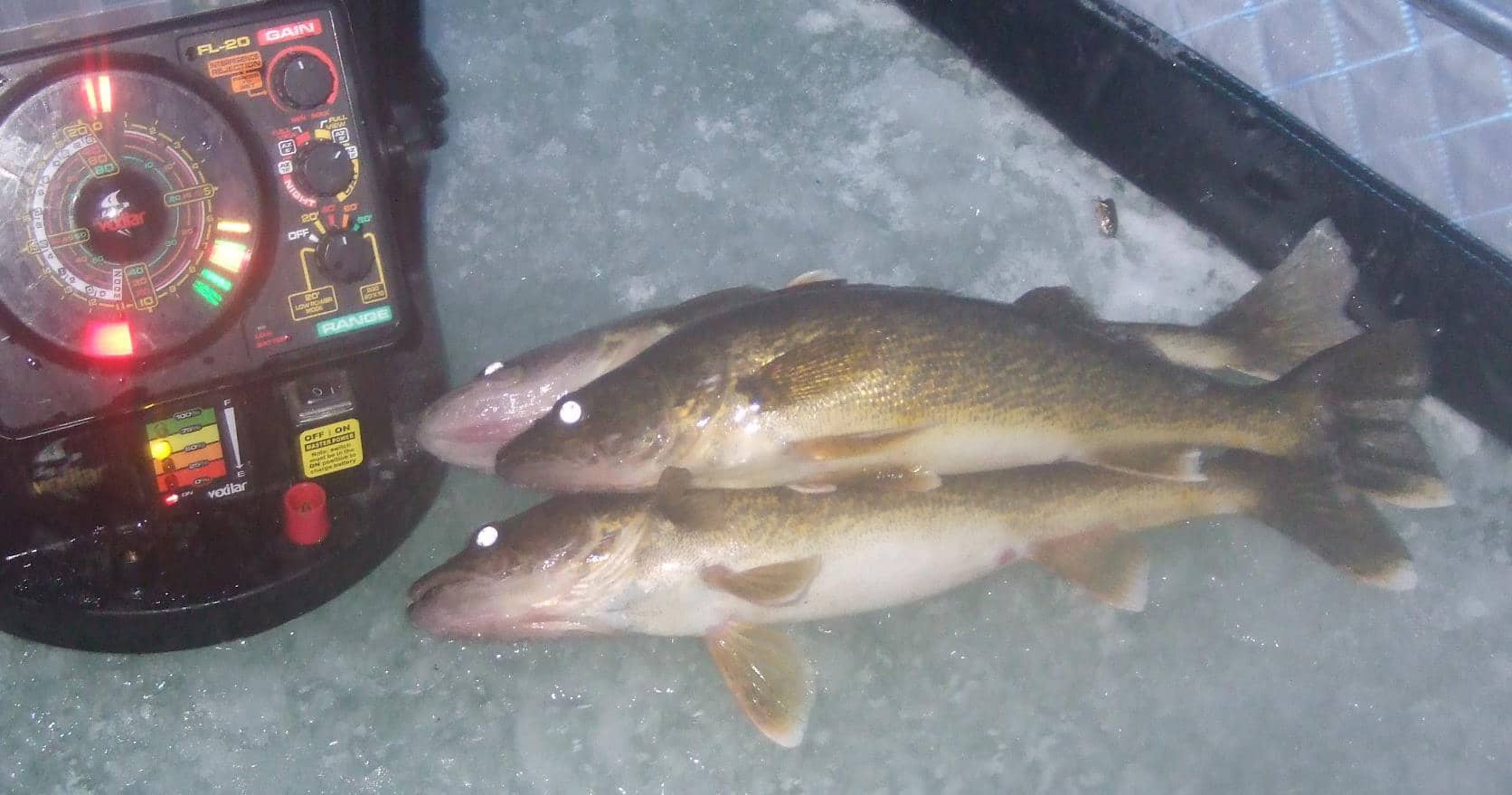
Anglers can expect good eater-sized walleye populations on Devils Lake this winter, as fish from 12 to 17 inches are frequent catches. Simonson Photo.
By Nick Simonson
The winter of 2021-22 brought a great deal of snow to the Devils Lake basin, helping the lake jump more than three feet last spring in conjunction with a late April snowstorm and timely seasonal rains heading into early summer. This rise in water likely helped multiple fish species in the state’s largest natural lake to carry off good spawns and established a solid forage base into late summer. Even with the dryer conditions headed into fall, Devils Lake was up two feet overall compared to last winter’s water levels at ice up, and the walleye and perch populations appear strong headed into this year’s hardwater season, according to Todd Caspers, Fisheries Biologist for the North Dakota Game & Fish Department (NDG&F).
“Overall I’d say it should be a pretty good winter for ice fishing if the access conditions hold up well. Our walleye numbers right now are pretty strong, perch numbers are pretty good too. Pike numbers are fair and white bass numbers pretty good as well, though they aren’t targeted really heavily in the wintertime,” Caspers details.
The two most popular pursuits in the winter on Devils Lake remain walleyes and yellow perch, and both species should provide consistent action for anglers exploring the basin this ice fishing season. With above average numbers, walleyes in that 12-to-17-inch range should be the most common and the occasional shot at a larger, trophy-caliber fish still exists. Additionally, yellow perch remain abundant, with a good year class now in that 9-inch range, and a strong sampling of fish a bit bigger than that is present. The occasional jumbo perch over that foot-long mark can still be found with a little searching.
“Right now there’s really strong numbers of those eater-sized walleyes in the lake,” Caspers explains, adding, “perch numbers seem to be a little above average right now, and there will probably be a lot of those perch around 9 inches right now, and a fair number of them just under 12 inches,” he concludes.
Northern pike numbers have come off their recent highs on Devils Lake, and they aren’t appearing in catches as frequently as in seasons past. While there are a few pike eclipsing 40 inches in Devils Lake, they are tougher to come by, but pike in general should still be a regular catch for those exploring the ice.
“We don’t think pike have had a strong hatch for a while, but they’re still out there, they’re still available. There are trophy pike in the lake – in excess of the 40-inch-long-type northern pike – there’s some trophies out there. But the average size in the lake is probably going to be more in that 24-to-30-inch range, which those are still pretty nice pike as well,” Caspers explains.
A strong forage base of freshwater shrimp exists in Devils Lake, and this year’s perch and white bass spawn was successful, likely bolstering the food available for the predator fish in the water. Anglers can look for active walleyes and perch up shallower at the start of the ice season, and then begin doing some exploring to find fish as the winter wears on. Caspers recommends ice anglers explore the shallower stretches of the lake first to find walleyes and perch, and a jigging spoon tipped with a minnow head is a good search lure for both walleyes and perch. Dropping down to a small jig tipped with a waxworm or spike is a good idea when perch seem to be more finicky. As the winter wears on, exploring deeper areas of the Devils Lake basin can pay off with fish, and anglers should be willing to work to find their best opportunities.
Simonson is the lead writer and editor of Dakota Edge Outdoors
